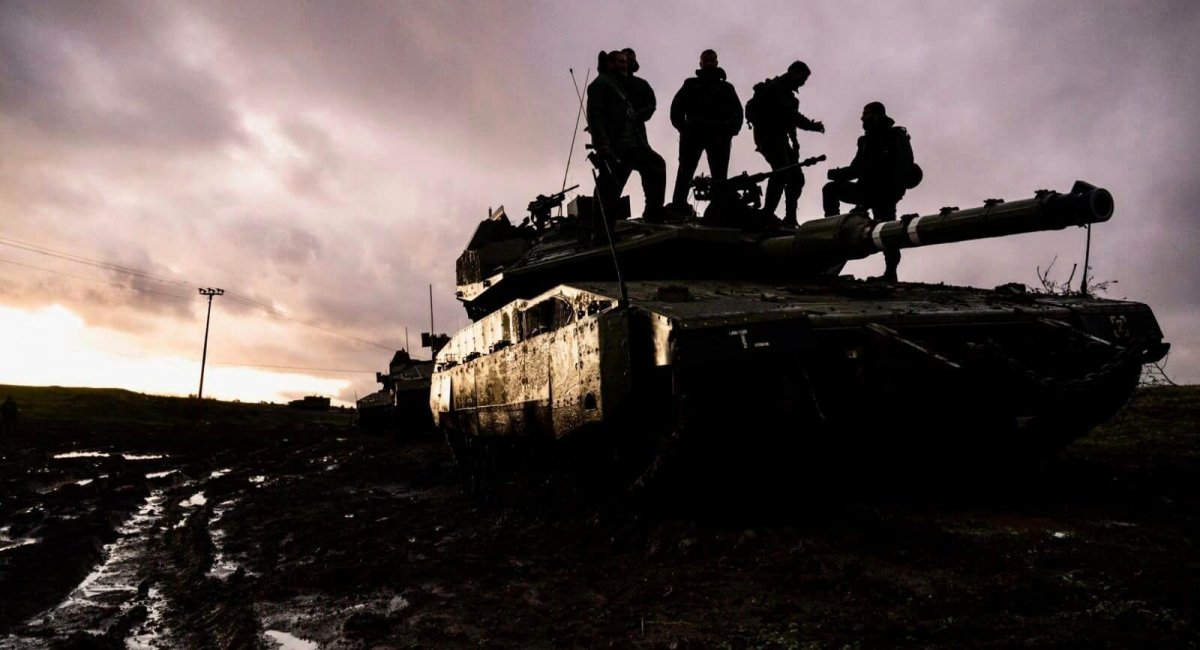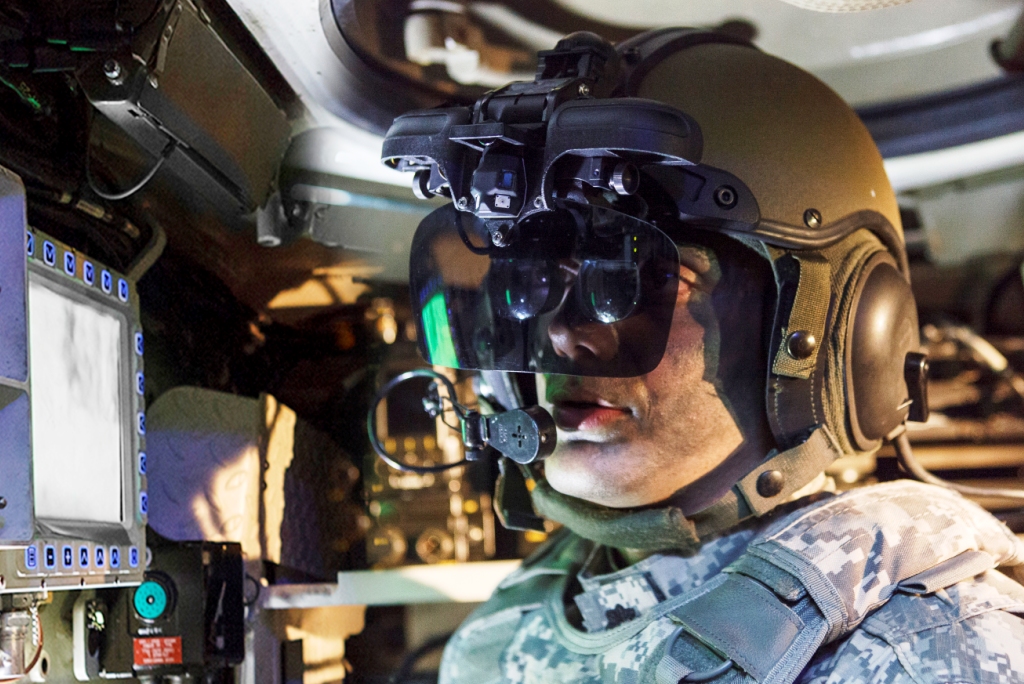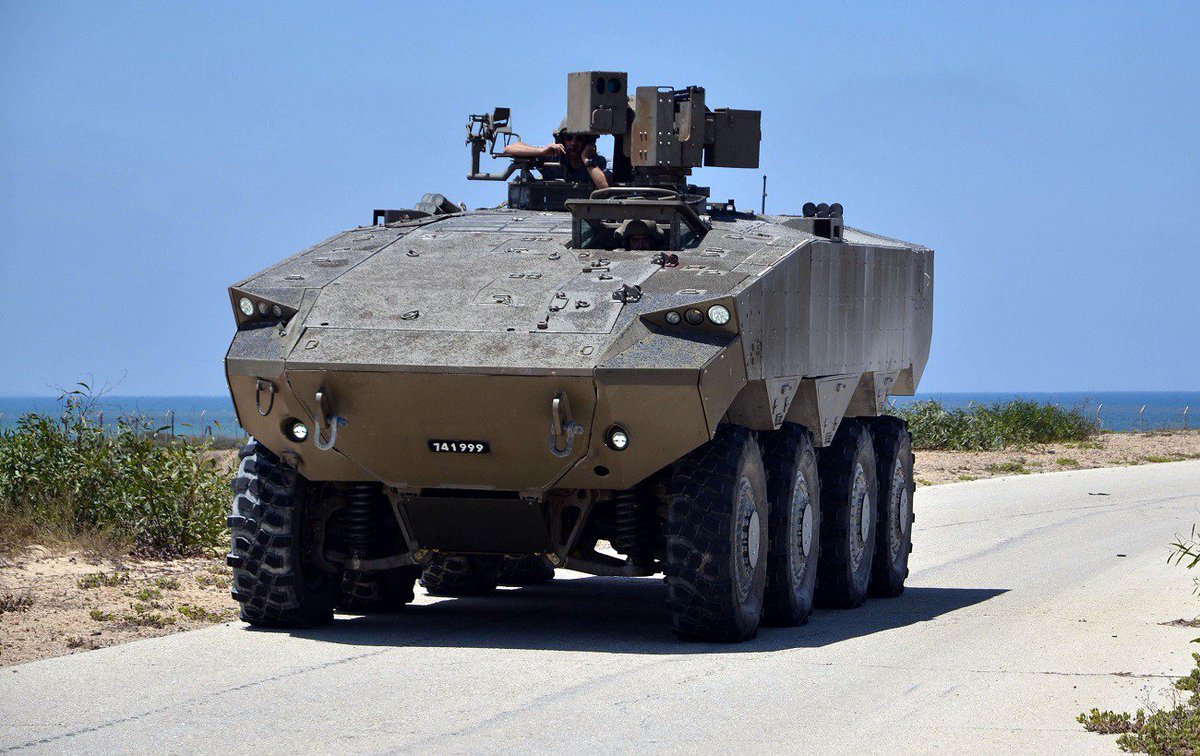
A test of billions of dollars of development: what newest weapons Israel will test in practice in a real war
Laser Iron Beam, “transparent armor” Merkava Mk 5 Barak, and wheeled Eitan instead of tracked armored vehicles
While the IDF is awaiting the command to launch a ground operation against Hamas in the Gaza Strip, which is related not only to the evacuation of the local population but also to favorable weather conditions, for Israel itself this operation will be a real test for new developments in which billions of dollars have been invested.
And the specifics of Israeli weapons, which were created under the strict dictates of its own theater of operations, tactics, and methods of use against known enemies, already make it more than interesting to observe.
Laser Iron Beam
In particular, it has already been reported that the IDF allegedly used its latest Iron Beam laser system to intercept rockets or unguided missiles.
But despite two videos appearing online, one of which was just a recording of a computer game, and the other (below) actually looks quite similar to the use of laser weapons, Israel officially reported that it has not yet used Iron Beam.
#BREAKING This footage is rumored to be the first operational use of Israel’s Iron Beam laser missile defense system, working against Hamas rockets. pic.twitter.com/jKqZs8spPQ
– Clash Report (@clashreport) October 15, 2023
At the same time, unconfirmed information has already emerged about the intention to deploy the first system in the army for real operational tests. However, back in October last year, the developer Rafael announced that it would take several more years before Iron Beam would be fully deployed.
The Iron Beam is designed to burn out a range of threats with a 100-kW laser, from unguided missiles and drones to mortar shells. And potentially, this is an extremely promising, and most importantly, cheap to operate system that could well replace the current traditional anti-aircraft missiles, as well as systems such as C-RAM.
Merkava Mk 5 Barak
The Merkava tank itself is a certain symbol of the IDF, which has continued to evolve since the late 70s, reaching the Mk 5 Barak version. According to the plan, the first tanks of this version were to be delivered to combat units in 2023, and the operation in the Gaza Strip is likely to be the vehicle’s combat debut.

The main feature of the vehicle is total digitalization, visibility and integration into modern battlefield information systems. The smallest manifestation of this is the augmented reality of a 360-degree view through “transparent armor.”
And it’s not just about displaying images from cameras, but also about target and allied marks, tactical information, etc., as in a computer game interface. Currently, the same technology is used in production models only on F-35 fighters.

In this way, not only is the main problem of any tank solved – low visibility – but the tank itself is transformed into a powerful reconnaissance and observation complex, which, in addition to a panoramic sight, also has a radar to detect ground targets. And all this information is not locked in the tank itself, but is transmitted to other vehicles and weapons through automated command and control systems.
After that, we can mention the installation of the Trophy active defense system, which has not yet shown the ability to protect against the cheapest means of destruction in the form of a drone strike. But the fact is that the Merkava Mk 5 Barak has a built-in electronic warfare system, which in theory should protect it from such a threat.
Therefore, the use of Merkava Mk 5 Barak in real combat will obviously answer the question of the viability of both of these promising areas of armored vehicle development.
Eitan – wheels instead of tracks
Another Israeli development that began to be delivered to the IDF only in 2023 is the Eitan wheeled armored personnel carrier. This 35-ton wheeled vehicle is to replace the outdated M113 tracked vehicles in the Israeli army.

The Eitan itself can rightly be called a classic heavy wheeled armored personnel carrier with a level of protection equal to STANAG 4569 lvl 4, i.e., a circular defense of 14.5 mm at a distance of 200 meters. But for Israel, for which even the Merkava-based Namer APC is not exotic, the main difference is that it is a heavy armored vehicle on wheels. And the question of whether wheels for armored vehicles are really better than tracks is more than debatable.
And the answer to this question, at least for Israel, can be provided by the combat use of Eitan. At the same time, obviously, in the most difficult conditions of combat in built-up areas, where tactical mobility has an obvious advantage over operational mobility.

